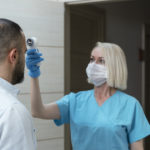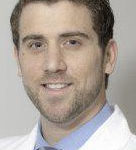By Bradley J. Richlin, OD

May 13, 2020
Practice life after the pandemic will be anything but normal as we once knew it, but we can still deliver a great patient experience. Here is how my practice is mapping out a patient safety-check process that protects both patients and staff, while maintaining efficiency.
Our five-OD practice, with one location in Beverly Hills, Calif., has been closed since March 16. We closed ahead of the California shutdown of “non-essential businesses,” based on our own judgement of what was best for our patients and staff. Since that time we have been delivering emergency care and patient visits using telemedicine. We have been in communication with patients with previously diagnosed conditions like ocular allergies, answering questions and writing prescriptions for medications.
We have always given patients the ability to order contact lenses by e-mail and phone, and now we are using Yourlens.com, an ABB Optical Group product, to give patients the ability to order directly from our web site. The contacts are delivered directly to their home with no need for our staff to participate in fulfillment.
Our doctors have given up their salary, and for now, our 23 support staff employees have been given full pay, regardless of whether they are able to do their job for us during the office closure. The Paycheck Protection Program allows us to continue doing so.
More Days Open & Longer Hours Following Reopening
When we reopen, we will be available for patient appointments from 7 a.m. to 7 p.m. five days a week and Saturday 8 a.m. to 6 p.m. and Sunday 10 a.m. to 5 p.m. We were 8 am. to 6 p.m. Monday through Friday and 9 a.m. 5 p.m. Saturday. In addition to giving us greater ability to recoup lost revenues, these office hours will make it possible to spread out appointments. We used to have seating for 15 people in reception area and now cut that capacity down to six.
Drop At Least A Few Vision Insurance Plans
We are heavily focused on medical eyecare, and have been trying to move away from dependence on reimbursement from patient vision plans. We have been thinking about dropping our acceptance of a few vision insurance plans for years, and this crisis is pushing us to finally do it.
Other Articles to Explore
Our long-term outlook is to create a practice in which we see fewer patients with higher reimbursement levels. Increasing care for medical eyecare patients, such as those with dry eye and ocular surface disease, will give us the ability to do this.
Safety Check to Get Into the Office
Each patient’s temperature will be checked at the door, before they can enter, with a non-touch thermometer. They will then be given a mask and asked to put away their cell phone, and to not take it out again until after they leave the office. Then they will be given hand sanitizer to clean their hands.
After each patient has been successfully checked and given a mask and hand sanitizer, they will be given a sticker to wear so everyone who sees them knows they have passed through our safety process. We have purchased over 5,000 masks, donating a portion of that stockpile to local hospitals, while saving the rest to keep our patients safe after reopening.
High-Tech Cleaning Solutions
We have invested over $5,000 in cleaning technology, such as three EnviroKlenz units, “air scrubbers” that purify the air. We will train our employees to clean surfaces in the office at regular intervals, rather than waiting until the end of the day, or just doing it in the morning upon opening. An additional bonus: This technology cuts down on the in-office lab smell created by cutting lenses.
No Big Reopening Party, But Keeping In Contact with Patients
In life before the pandemic, an office reopening after a closure would be occasion for a party or a big, in-person event like a trunk show. Now, encouraging large gatherings is the last thing we would want to do. Instead, we are concentrating on keeping in touch with our patients so we can be of service to them during this time, and to let them know right away when we are able to see them again in our office.
We have been sending an e-newsletter to our patients every three weeks. We keep our e-mails to them limited to that number because we know they are already inundated with COVID-19 communications. We also have ramped up our posts to Facebook and Instagram, using these sites to answer general contact lens questions and to pass along information on the crisis from the Centers for Disease Control and updates from Los Angeles Mayor Eric Garcetti.
Our practice has a long tradition of service to patients, as it was founded by my father 40 years ago. I am standing on the shoulders of his experience to move our practice through this difficult period. I’m using his experience to frame our strategy and my Millennial brain and ingenuity to implement that strategy.
 Bradley J. Richlin, OD, is a partner with Richlin Eye & Associates in Beverly Hills, Calif. To contact him: drbradleyrichlin@richlineye.com
Bradley J. Richlin, OD, is a partner with Richlin Eye & Associates in Beverly Hills, Calif. To contact him: drbradleyrichlin@richlineye.com

























